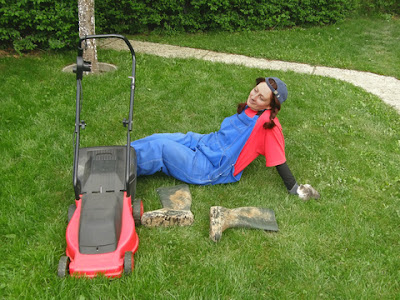 |
| Source: http://www.youtube.com/watch?v=JRXYOxwVmO8 |
The flywheel on your little engine was originally designed to store power produced by the combustion to maintain the action between the crankshafts of engine power strokes. But the flywheel on today's engines fulfills several other missions. The fins enhance the engine by distributing cooling air around the engine block.
The fins also ventilate the air deflector on a pneumatic regulator, thereby maintaining the desired engine speed . Magnets mounted on the outer surface of the flywheel are required for ignition. On engines with a starter, lighting or other devices, the magnets mounted on the inside and outside of the flywheel are at the heart of the electrical system .
Finally, if the blade of a mower or rot tillers against a stone or a border, the key flywheel can sometimes absorb damage, which significantly reduces the costs of repair. Always check the damage by removing the flywheel to inspect the pin and the groove, the housing of the pin on the crankshaft. The soft metal key should remove the clearance between the flywheel and the crankshaft.
Remove the flywheel
Disconnect the spark plug wire and move it away from the spark plug. Then loosen the bolts that hold the cover in place and remove the cover.
If the engine is equipped with a flywheel brake, remove all covers and disconnect the outer end of the stop spring.
If the flywheel is equipped with a clutch, remove it using a dedicated tool while holding the flywheel with a flywheel or support for an adjustable strap wrench.
If the flywheel is held by a nut, use support for flywheel as an anchor, and remove the nut using the appropriate form.
The nut screwed into the crankshaft flywheel, installs a flywheel extractor so that its lock bolts in the holes adjacent to the hub of the flywheel . If the holes are not threaded, use a flywheel puller motor self-tapping or tapping holes with a tap 1/4 X 20.
CAUTION:
Do not tap the flywheel. Even a slightly damaged flywheel presents a security risk and should be replaced.
Rotate the nuts on a regular basis extractor until the flywheel is disengaged. Then remove the flywheel and key.
Inspect the flywheel and key
- Check for cracks on the crankshaft or broken fins on the flywheel. If this is the case, replace them. The tapered sections must be clean and smooth.
- Inspect the flywheel and the key to check if there is any damage. Slight irregularities can be filed down. Then make sure that there is no play or float when installing the flywheel on the crankshaft.
- Inspect the flywheel key. If shear signs or doubts about the status of your flywheel key, replace it. This is a simple and inexpensive task.
Install the flywheel
- Get a first driving key new engine.
- Place the flywheel on the crankshaft and look through the hub of the flywheel to align the grooves on the flywheel and crankshaft.
- Once the flywheel in place, insert the key into the groove; it should fit perfectly. In the presence of loose, check if the key is not in reverses. Debris can also distort the position of the key in the groove.
- Once the key and perfectly positioned flywheel, reattach the nut or the clutch flywheel.

No comments:
Post a Comment